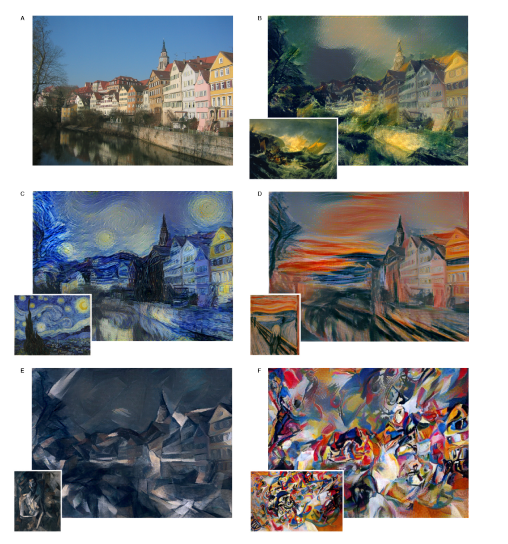Speaker: Wiro Niessen
Department: Biomedical image analysis
Location: TU Delft
Date: 17-5-2017
Author: Katja Slangewal
Are doctors in the near future being replaced by technology? Approximately five years ago scientists were still laughing at people working at neural networks. However, at the moment neural networks can process more and more data in a short amount of time. Together with a huge progress in imaging, this revolution in machine intelligence makes the first question a reasonable one. According to Dr. Wiro Niessen artificial intelligence is still complementary to humans, he sees a bright future in which human and computer will work together.
Artificial intelligence keeps surprising people. It is already clear that many (repetitive kinds of jobs) will soon be taken over by machines. However, at the moment machines are also capable of making music and paintings (figure 1). These are things which were long considered to be limited to humans. In the late 1980s computers were already capable of beating humans in a game of chess. Challenges were designed to come up with algorithms for other games. For instance, the game GO, a very complex Chinese board game, was a subject of focus. Scientists predicted artificial intelligence to beat humans around the year 2025. However, this already happened last year (2016). One interesting thing Niessen mentioned during his talk is the difference between human and computer intelligence. During the game of GO the computer program, based on neural networks, learned through experience. So it was very unexpected when the computer made a move which was never made by humans before. In the end the move turned out to be truly smart 5 or 6 turns later. This means that the computer was capable of looking ahead in the game. So computers are getting better and better. This is not only useful in games, but also in the medical field.

Figure 1: Machines can learn styles from various painters and apply them to any picture. In small are paintings from famous painters. In large is the top left picture remade to the different styles. https://motherboard.vice.com/en_us/article/artificial-intelligence-can-now-paint-like-arts-greatest-masters
Niessen and his colleagues are focusing on early prognosis of dementia. They showed that several markers of the disease already show an elevated level long before the onset of the disease. To find the markers visible before the start of a disease is a difficult thing to do. This is why a population study was started in 1990 in Rotterdam. During this study people regularly undergo various tests and over the years it becomes clear how their health develops. During the study, risk factors (genetic markers, lifestyle, smoking, etc.) are being linked to an outcome (dementia, stroke, etc.). Next, the brain of the patients can be traced back to look for markers in morphology, volume, lesions and more. Niessen and his group have found patterns in the brain images linked to a disease. These patterns are visible long before other symptoms are starting. So, they use the data about several markers to write algorithms which will predict the chance of getting dementia or a stroke. One example which has been determined during the Rotterdam study, is the shrinking rate of the brain and its standard deviation. Programs and information like this will help radiologists to diagnose patients.
At the moment Niessen and his colleagues are connecting SNPs to imaging phenotypes (like brain morphology or volume). This way they found certain SNPs that are correlated with the volume of the hippocampus. These SNPs are being put in a library accessible online. So, to conclude, computers are getting smarter and smarter. They will take over repetitive jobs and they will also be useful in more complex kinds of work. In the medical field Niessen expects computers to shift the focus from curing diseases to preventing diseases.
Dr. Wiro Niessen gave an interesting talk. It keeps surprising me how much computers are already capable of. I had no idea computers can paint quite good already. I also liked to hear about the possibilities of combining biological knowledge about the brain with writing algorithms to predict diseases. A lot of different research areas are combined here, which is of course interesting for nanobiologists.

